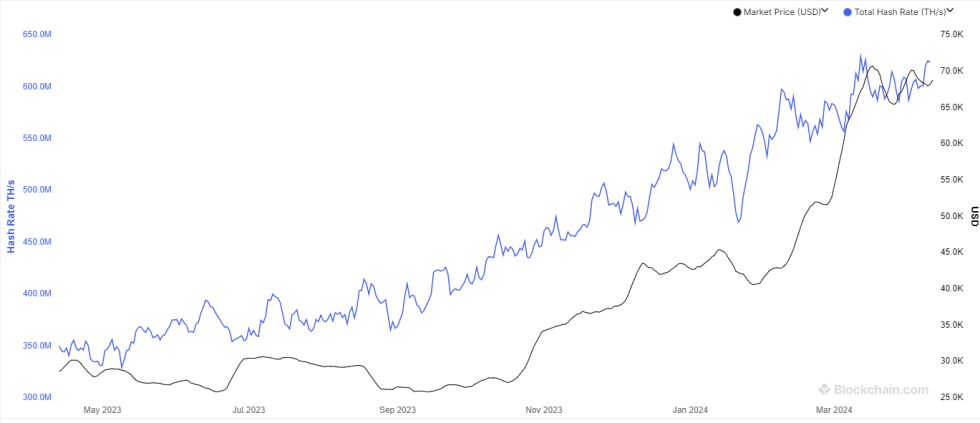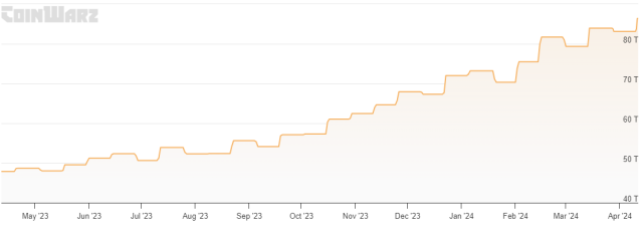Bitcoin Hashrate Back Near ATH, Forces Difficulty To Grow 4%

On-chain data shows the Bitcoin mining difficulty has risen by 4% recently as the mining hashrate has approached all-time high (ATH) levels.
Bitcoin 7-Day Mining Hashrate Is Back Near ATH Levels
The “mining hashrate” refers to the total computing power that the miners have connected to the Bitcoin blockchain. This metric correlates with the network’s security.
To perform a successful 51% attack on the network, bad actors must gain control over at least 51% of the online mining rigs. When the hashrate goes up, the security naturally strengthens, as there are now more machines that an attacker needs to succeed.
Of course, this is only true if the new power being added to the network is properly decentralized. If the hashrate is centralized, the network risk may not decrease by the same degree if more power is added.
The hashrate also provides a look into the demand for mining cryptocurrency. Growth suggests that miners find the network attractive, while a decline implies that some miners find the chain unprofitable and have thus decided to disconnect.
Now, here is a chart that shows the trend in the 7-day average Bitcoin mining hashrate over the past year:

The 7-day average value of the metric seems to have been going up in recent days | Source: Blockchain.com
As displayed in the above graph, the 7-day average Bitcoin mining hashrate has registered an increase recently and has approached its ATH value setback in mid-March. The miners have decided to re-expand their facilities after dialing back earlier.
Besides measuring the total computing power, the hashrate can also be viewed as a representation of the competition between the individual miners.
On the Bitcoin network, block rewards that the miners receive are fixed in BTC value (except for during Halving events, when they are permanently slashed in half). The chain also aims to distribute them at a more or less steady rate, with a block added about every 10 minutes.
This means that even if the miners add more hashrate, they can’t use the extra power to process blocks faster. Thus, since the rewards stay the same, an increase in the hashrate means the share of every individual miner gets smaller.
A miner can only prevent this from happening if they also increase their hashrate by the same proportion as the network increase. Either way, an increase in the hashrate is bad news for the margins of the individual miners, as it means that competition has just become tougher.
To ensure this dynamic remains true, the Bitcoin network has the “difficulty” feature implemented. When the miners add more computing power, the block time initially shrinks as they leverage the extra hashrate to pump out blocks faster.
As a response, however, the network increases the difficulty, making it harder for the miners to solve blocks. Thus, any speed increase counteracts the extra computing power offered.
Following the latest hashrate increase, it’s not unexpected that the difficulty has also increased in the latest biweekly adjustment on the chain.

Looks like the metric has just seen an increase | Source: CoinWarz
BTC Price
At the time of writing, Bitcoin is trading at $69,700, up 3% over the past week.
The price of the asset appears to have overall been moving sideways over the last few days | Source: BTCUSD on TradingView
Featured image from Dmytro Demidko on Unsplash.com, Blockchain.com, CoinWarz.com, chart from TradingView.com
Disclaimer: The article is provided for educational purposes only. It does not represent the opinions of NewsBTC on whether to buy, sell or hold any investments and naturally investing carries risks. You are advised to conduct your own research before making any investment decisions. Use information provided on this website entirely at your own risk.
Source link






